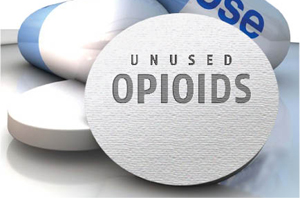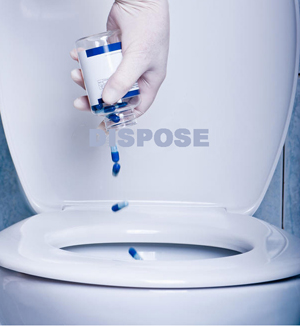
How to Dispose of Unused Opioids and High-Risk Drugs Safely
Unused, unneeded or expired drugs in homes present a number of risks, including intentional or accidental overdose in humans (particularly young children), as well as toxic effects in pets. This is particularly true for prescription drugs that are controlled substances, incuding opioids — powerful medications such as morphine, that are used to manage severe pain when other drugs are ineffective or cannot be taken. These drugs can cause serious risks, including abuse, addiction, overdose and death due to extreme sedation and slowed breathing.

Importantly, a systematic review showed that up to 70% of oral opioid tablets dispensed to surgical patients after their hospital discharges were ultimately unused, mainly because of pain resolution or due to opioid-induced adverse effects. The review also found low rates of disposal of these unused opioids. Another study showed that some patients tended to keep their leftover opioid medications “just in case” they are needed in the future or because they planned on disposing of them after the expiration date. Others kept these opioids because they were either unsure how to dispose of them or they had no further plans for disposing of them. Given the serious risks of these medications, it is critical to dispose of any unused doses as soon as there is no longer a medical need for them. Learn how to do so safely by following the recommendations of the Food and Drug Administration (FDA).

What are the FDA recommendations? The FDA advises that consumers should ideally dispose of all prescription and over-the-counter medications, particularly opioids, and dietary supplements by taking them to the authorized drug take-back location. These locations are usually located in certain retail pharmacies, hospital or clinic pharmacies, or law enforcement agencies. If a take-back location is not readily available, FDA recommends that certain opioids and other drugs be flushed down the toilet. The FDA-approved labeling and medication guides for these drugs also include these flushing instructions. FDA scientists have found only negligible environmental (including surface and drinking water supplies) and human health risks associated with flushing these select medications. Therefore, the agency determined that the known risk of harm to humans from accidental, and sometimes fatal, exposure to the drugs on this flush list far outweighs any potential public health risk to humans from flushing these unneeded drugs. Like almost all other oral medications, if no take-back location is readily available and the oral drug is not on the FDA flush list, the agency recommends that consumers mix the drug with an unappealing substance (such as dirt or coffee grounds), place it in a sealed plastic bag and throw the bag in the trash.
Dispose of any unused drugs, particularly opioids, in your home following the instructions on the labeling. If such instructions are unavailable, take the drug to a drug take-back location near you. If the drug is on the FDA flush list, flush it down your toilet or drain to remove the risks of these medications from your home. This is especially important to help limit the devastating opioid crisis affecting many American families.